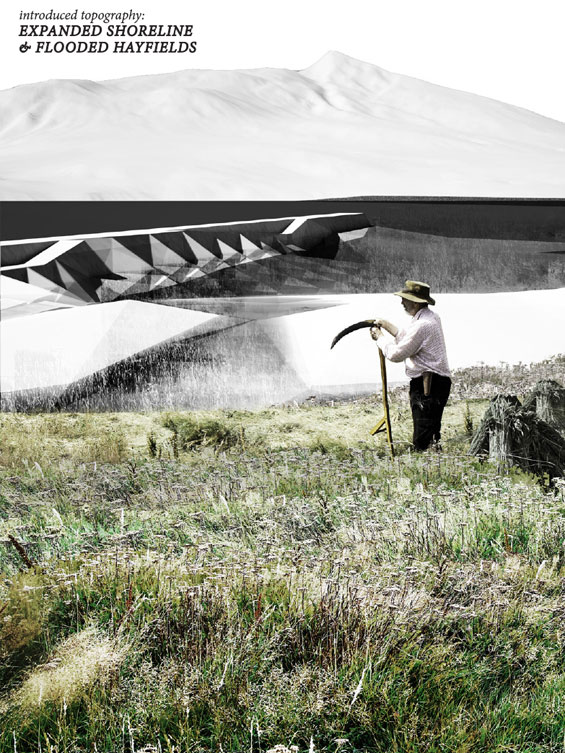
In the Chilean Patagonia, the ecosystem is anything but pristine. Fires ravaged much of the bountiful woodlands in the rugged and remote province of Aysen in a mid-century effort to create grazing land, but instead left countless miles of barren land. Now, a proposal for a series of dams on the mighty Pascua and Baker rivers, Chile’s largest, has proven highly controversial for its potential economic and socio-cultural impacts.
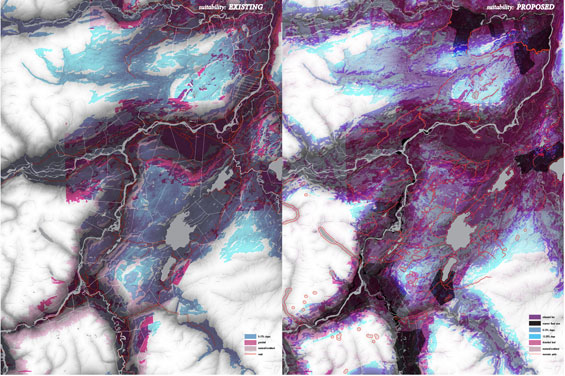
This proposal intends to redefine the physical and cultural impacts of both dams on the Baker River proposed by Hidroaysen. A critical component of dissatisfaction with the proposal is caused by cultural conflicts, including the relocation of some thirty families to higher ground or to adjacent river valleys appropriate for the raising of livestock. While flooding must occur if the dams are built, the traditional practice of relocation can be abandoned in favor of tactics that allow for continued inhabitation while bolstering the productive capacity of the land and its inhabitants.
Flat ground as well as healthy meadows and grasslands are notable only for their relative absence in the river valleys of the Colonia, los Nadis, Baker, and other rivers in this system. Although riverside land is prime grazing land, it is in relatively short supply, and will be even less so after the reservoirs are flooded. As a result, poorly vegetated hillsides must be used for grazing regardless of their poor productive capacity.
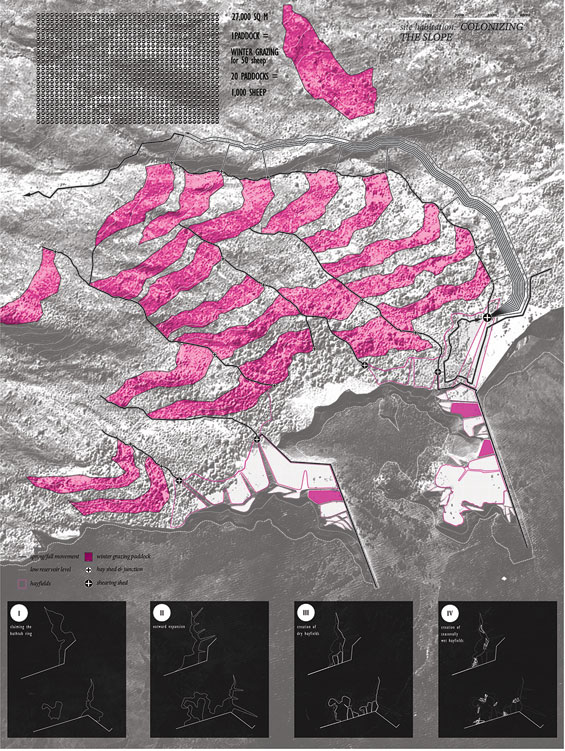
PROPOSAL
In this region, existing livestock practices exist within an environment that can barely support them. This proposal positions itself between the proposed Hidroaysen dam project and the cultural and economic difficulties encountered by local gauchos as a result of these poor conditions. Through the utilization of soil and timber from the flooded valley floor, new landforms colonize barren hillsides to create new a new variable soil profile for the growth of substantive forage, windbreaks, and much-needed hay. Through the utilization of this valuable organic material, previously unusable land becomes the new engine for productive and responsible economic growth in the ranching sector of Aysen.
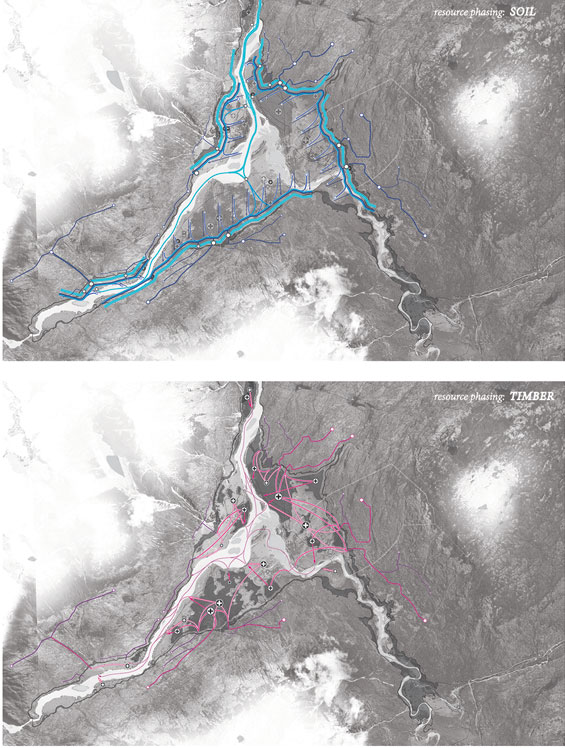
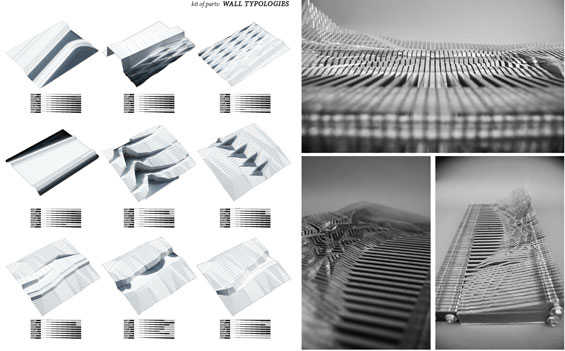
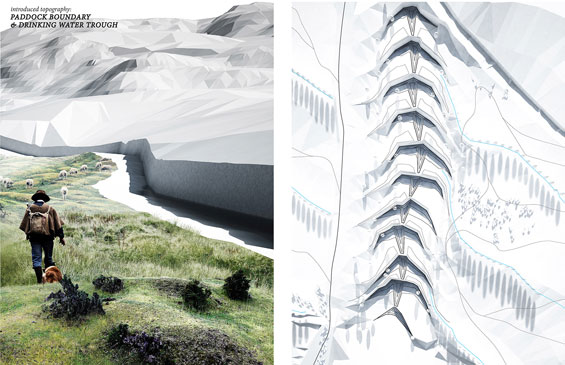
Both the hillside and water’s edge play a vital role in the creation and growth of sheep ranching on-site. Winter grazing paddocks on the hillside provide dry grazing ground suitable for sheep, and begin the regrowth of the heavily depleted soil profile through a series of topographic interventions, such as timber retaining walls which are backfilled with new soil from the flooded valley floor. Each paddock is divided into 10 individual pens through which the sheep are rotated through during the winter grazing season. The design interval of 30 days is designed to allow for regeneration of vegetation in poor soils, the rate of which is highly variable depending on climatic factors.
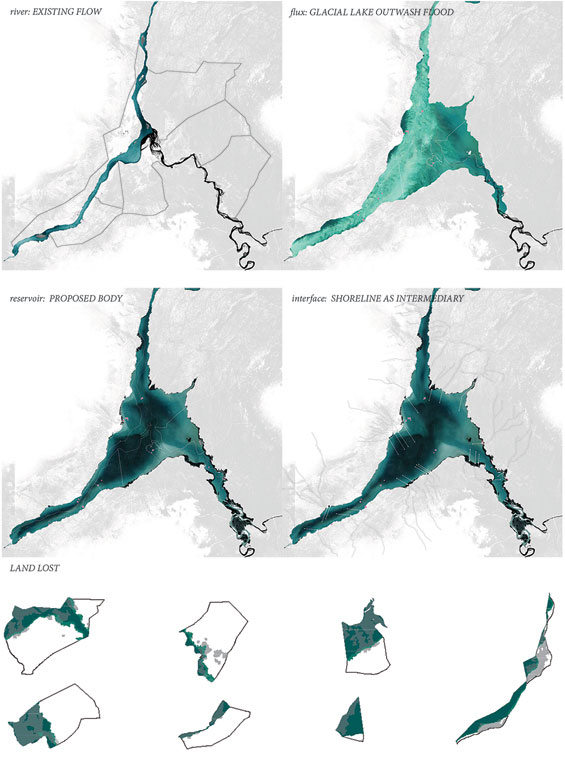
On the water’s edge, new ridges extend into the water, acting as armatures for the reclamation of land from the bottom of the reservoir. This land is host to hay fields, as it is too moist for sheep to graze. Hay is a necessary seasonal supplement to sheep production, and so these pens play a vital role in the seasonal rotation of sheep pasture. Sheep, and livestock in general, are very succeptible to the seasonal effects of climate change as they effect provision of water, abundance of forage, temperatures, and other factors. Perhaps the most notable trend in seasonal movement regarding livestock is the practice of transhumance, or the large-scale movement of stock across significant distance to seasonal pasture. Typically, high pasture is sought in summer with the intention of preserving low, easily accessible winter pasture for more vulnerable months. In South America, these transhumance practices are called veranadas and occur during winter months typically in or near the Andes.
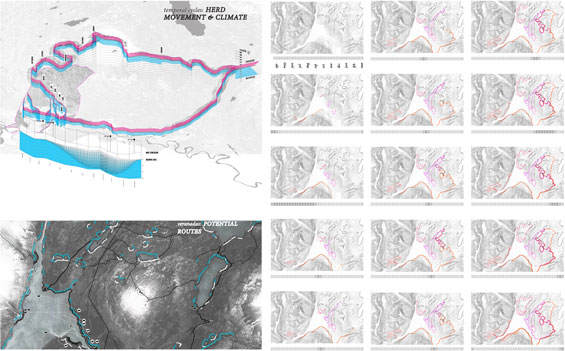
On site, this seasonal movement takes place from mid-November to the end of February. The project proposes communal grazing grounds in the high streambeds, passes, and lakeshores that surround the river valleys of the Baker and other rivers. While colder weather grazing practices must me more highly managed to deal with lambing and shearing in the spring, as well as other practices, summer grazing is typically open range and requires more manpower, thus providing an advantage to a large communal herd with a complementary group of sheepherders.
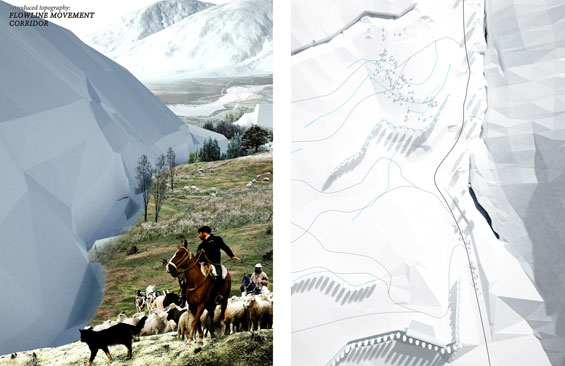
As summer comes to a close, fall grazing occurs along the shoreline, allowing sheep to be organized and led to paddocks for the winter grazing season. Small, free range grazing fields here allow livestock to occupy a controlled space temporarily as they wait to enter hillside pasture.
Project name: CLAIMING PRODUCTIVE GROUND
Location: Cochrane, Aysen Province, Chile
Designer: Dane Carlson, Harvard GSD MLA II Candidate
Year: 2012
Image and Text Credits: Dane Carlson


Comments are closed.